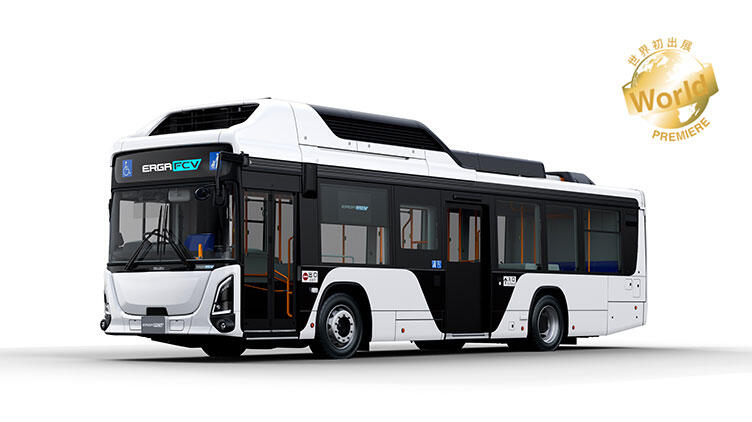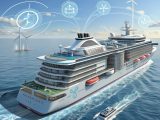
Hydrogen Production Powers Zero-Emission ERGA FCV Bus from Isuzu and Toyota
October 17, 2025Overview of the ERGA FCV Unveiling
At Tokyo Big Sight’s West Hall during the Japan Mobility Show 2025, the atmosphere was buzzing when Isuzu Motors Limited and Toyota Motor Corporation rolled out the new ERGA FCV. Against Japan’s big push for sustainable energy and beefed-up hydrogen infrastructure, this zero-emission technology bus feels like a peek into tomorrow’s public transit. The sleek, flat-floor body borrows from Isuzu’s popular ERGA EV platform, while Toyota’s state-of-the-art fuel cell system hums quietly under the hood.
The October 15 unveiling drew a mix of industry leaders, policymakers, fleet operators and curious onlookers. Everywhere you looked, people were praising the barrier-free interior and the promise of lightning-fast refueling—two game-changers for fleets tired of long EV charge times. Production is slated to kick off in fiscal 2026 at J-Bus’s Utsunomiya plant, perfectly timed with Japan’s expanding network of hydrogen stations. Before you know it, ERGA FCVs will be navigating city streets from Tokyo to Osaka.
- Zero-emission technology: runs on hydrogen fuel cells and expels only water vapor.
- Flat-floor accessibility: barrier-free boarding for wheelchairs, strollers and luggage.
- Modular platform: shared chassis for BEV and FCEV models streamlines production and maintenance.
- Rapid refueling: back in service in under 10 minutes, compared to hours for battery-only buses.
- Government alignment: supports METI’s priority regions for hydrogen infrastructure deployment.
- Production timeline: assembly begins fiscal 2026 at J-Bus’s Utsunomiya facility.
Technical Highlights
At the heart of the ERGA FCV is Toyota’s co-developed hydrogen fuel cell system. High-pressure hydrogen stored in rooftop composite tanks feeds a fuel cell stack where it mixes with oxygen to generate electricity—no harmful emissions, just a puff of water vapor. Pair that with Japan’s advances in hydrogen production, and you’ve got a bus that’s green from tank to tailpipe. It’s a showcase of how clean and efficient fuel cell technology can be.
Step inside and the difference is obvious. Isuzu’s genius flat-floor bus platform tucks the drive motor and control units into the roof assembly, leaving the cabin floor perfectly level. Whether you’re wheeling on a stroller, rolling in a wheelchair or juggling shopping bags, you’ll appreciate the seamless access—and faster passenger flow that cuts dwell times at stops.
Noise and vibration? Virtually non-existent. Compared to a roaring diesel rig, the ERGA FCV glides along whisper-quiet, making life easier for drivers and more comfortable for riders. And because it shares a common chassis with battery electric variants, swapping out propulsion modules is a breeze—promising lower lifecycle costs and simpler upkeep for fleet managers.
A Legacy of Hydrogen Mobility
The ERGA FCV builds on Isuzu’s ERGA EV, Japan’s first mass-produced flat-floor electric bus that proved accessible battery-powered transport can work in busy cityscapes. It’s the next logical step in a transport evolution that’s been gathering steam for years.
Toyota’s credentials come from the ground up: the Mirai fuel cell sedan and the Sora city bus have been running real routes, ironing out technical kinks and demonstrating how hydrogen fuel cells can scale from personal cars to commercial giants. Those lessons feed straight into the ERGA FCV’s design and operation.
Japan’s hydrogen roadmap—championed by the Japanese Ministry of Economy, Trade and Industry (METI)—has been maturing since the early 2010s. METI’s May 2025 announcement of priority regions for hydrogen infrastructure perfectly aligns refueling networks with the ERGA FCV’s planned routes. And with the “Tokyo Future Tour 2035” expo running alongside, it’s a timely showcase of next-gen mobility prototypes.
Strategic Partnerships & Production Plans
Under Isuzu’s “Transformation – Growth to 2030 (IX)” carbon-neutral initiative, the ERGA FCV takes center stage. Isuzu leads on body styling, interior ergonomics and urban chassis engineering, while Toyota provides the core fuel cell stack and control software. This collaboration, formalized in September 2025, pools R&D resources to fast-track hydrogen bus development.
Production rolls out at J-Bus, the joint venture between Isuzu and Hino Motors, at its Utsunomiya plant in Tochigi Prefecture. Starting fiscal 2026, the facility will assemble initial ERGA FCVs alongside ERGA EVs, leveraging an existing flat-floor line to accelerate staff training and resource sharing.
Public backing is crucial. METI’s hydrogen infrastructure program identifies key corridors and hubs for refueling stations, ensuring buses never run dry. This kind of public-private teamwork not only fuels domestic adoption but could also pave the way for exports to Europe and Southeast Asia, where urban transit faces similar challenges.
Implications for Urban Transport
Replacing diesel fleets with hydrogen fuel cell buses like the ERGA FCV can dramatically cut urban CO₂ emissions and particulate pollution. In mega-cities such as Tokyo—where air quality and noise are constant headaches—these zero-emission technology vehicles offer real environmental and public health wins. Plus, with rapid 10-minute refueling, buses spend more time carrying passengers than charging.
Standardizing components across BEV and FCEV models drives down costs through economies of scale. As hydrogen production ramps up and electrolysis becomes more affordable, operating expenses are poised to drop even further. That cost shift could be the tipping point making fuel cell buses the go-to for high-frequency urban routes.
Of course, there are hurdles: hydrogen supply chains and station networks still need to expand in tandem with vehicle rollouts, and upfront costs for buses and refueling infrastructure remain steeper than diesel or battery alternatives. Yet with steady investment, supportive regulation and rising public demand for greener mobility, hydrogen fuel cell buses are on track to carve out a substantial niche in industrial decarbonization.
Looking Ahead
The ERGA FCV’s debut proves fuel cell technology is moving from lab prototypes to daily transit service. With production set for 2026, fleet operators, city planners and hydrogen producers have a clear timeline to coordinate station rollouts and bus orders. If everything clicks, Tokyo and other Japanese cities could set new benchmarks in zero-emission public transport by the early 2030s.
For the wider hydrogen economy, the ERGA FCV will be a case study in melding vehicle design, infrastructure and policy into a cohesive ecosystem. It’s an experiment you won’t want to miss—because its success could shape how cities move for decades to come.



 With over 15 years of reporting hydrogen news, we are your premier source for the latest updates and insights in hydrogen and renewable energy.
With over 15 years of reporting hydrogen news, we are your premier source for the latest updates and insights in hydrogen and renewable energy.